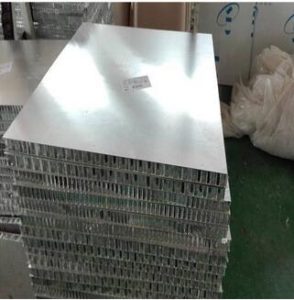According to different aluminum content of alloying elements, aluminum can be divided into eight series,

1000 series are essentially pure aluminium with a minimum 99% aluminium content by weight and can be work hardened.
2000 series are alloyed with copper, can be precipitation hardened to strengths comparable to steel. Formerly referred to as duralumin, they were once the most common aerospace alloys, but were susceptible to stress corrosion cracking and are increasingly replaced by 7000 series in new designs.
3000 series are alloyed with manganese, and can be work hardened.
4000 series are alloyed with silicon. Variations of Aluminum-silicon alloys intended for casting (and therefore not included in 4000 series) are also known as silumin.
5000 series are alloyed with magnesium, and offer superb corrosion resistance, making them suitable for marine applications. Also, 5083 alloy has the highest strength of not heat-treated alloys.
6000 series are alloyed with magnesium and silicon. They are easy to machine, are weldable, and can be precipitation hardened, but not to the high strengths that 2000 and 7000 can reach. 6061 alloy is one of the most commonly used general-purpose aluminium alloys.
7000 series are alloyed with zinc, and can be precipitation hardened to the highest strengths of any aluminium alloy (ultimate tensile strength up to 700 MPa for the 7068 alloy).
8000 series are alloyed with other elements which are not covered by other series. Aluminium-lithium alloys are an example
Depending on the process, aluminum sheet also can be divided into cold-rolled and hot-rolled
Widely used common grades:
1060 pure aluminum plate strip. Foil. Plate, drawing tube. Squeeze tube. type. Baton. Cold bar is mainly used for corrosion resistance in the case of forming relatively high, but not high intensity components, such as chemical equipment, marine equipment, railway tanker, conductive material, instrumentation materials, welding and something like that
3003: Aluminum plate and Aluminum strip. Aluminum Foil. Plate, drawing tube. Squeeze tube. type. Baton. Wire. Cold bar, cold wire, rivets, wire, forgings, foil, heat sink material is mainly used for processing the need for good formability, high corrosion resistance, good weld ability or parts, or both of these performance requirements. It needs higher than 1 *** alloy strength of the work piece, such as transport liquid tank and tank, pressure tanks, storage devices, heat exchangers, chemical equipment, aircraft fuel tanks, oil tube, reflectors, kitchen equipment, washing machine cylinder body, rivets, welding wire.
Clad aluminum 3003 alloy sheet, plate, drawing tube. Squeeze tube housing partition, roof, piping, etc.
3004 sheet, plate, drawing tube. squeeze tube is used for aluminum cans, requiring higher than the 3003 alloy parts, chemical products and storage equipment, sheet metal parts, building baffles, cable ducts, sewers, all kinds of lighting components.
3004 alloy clad aluminum sheet, plate mainly used for housing partition, baffle, sewers, industrial plants Housing cover
5052 Aluminum sheet, plate, sheet, foil, drawing tube, cold bar, cold wire, rivets, wire, this alloy has good forming properties, corrosion resistance, weld ability, fatigue strength and static strength medium, for the manufacture of aircraft fuel tanks, pipelines, and transportation vehicles, vessels, sheet metal parts, instruments, lights bracket and rivets, wire and so on.
6061 Aluminum sheets, thick materials, drawing tube. Squeeze tubes, rods, profiles, wire, tube, rolled or extruded structural shapes, cold bar, cold wire, rivets, wire, forgings. It requires a certain degree of strength, corrosion resistance, weld ability, high variety of industrial structures, such as the manufacture of trucks, tower buildings, ships, trams, railway vehicles, furniture, etc. with the tubes, rods, profiles.
7075 aluminium alloy is an aluminium alloy, with zinc as the primary alloying element. It is strong, with a strength comparable to many steels, and has good fatigue strength and average machinability. It has lower resistance to corrosion than many other aluminium alloys, but has significantly better corrosion resistance than the 2000 alloys. Its relatively high cost limits its use.
No comments:
Post a Comment